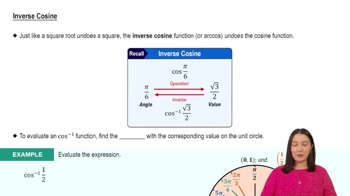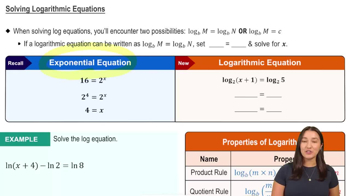Determine if the function is an exponential function.
If so, identify the power & base, then evaluate for .
 Verified step by step guidance
Verified step by step guidance Verified video answer for a similar problem:
Verified video answer for a similar problem:



 5:57m
5:57mMaster Graphs of Common Functions with a bite sized video explanation from Patrick
Start learning